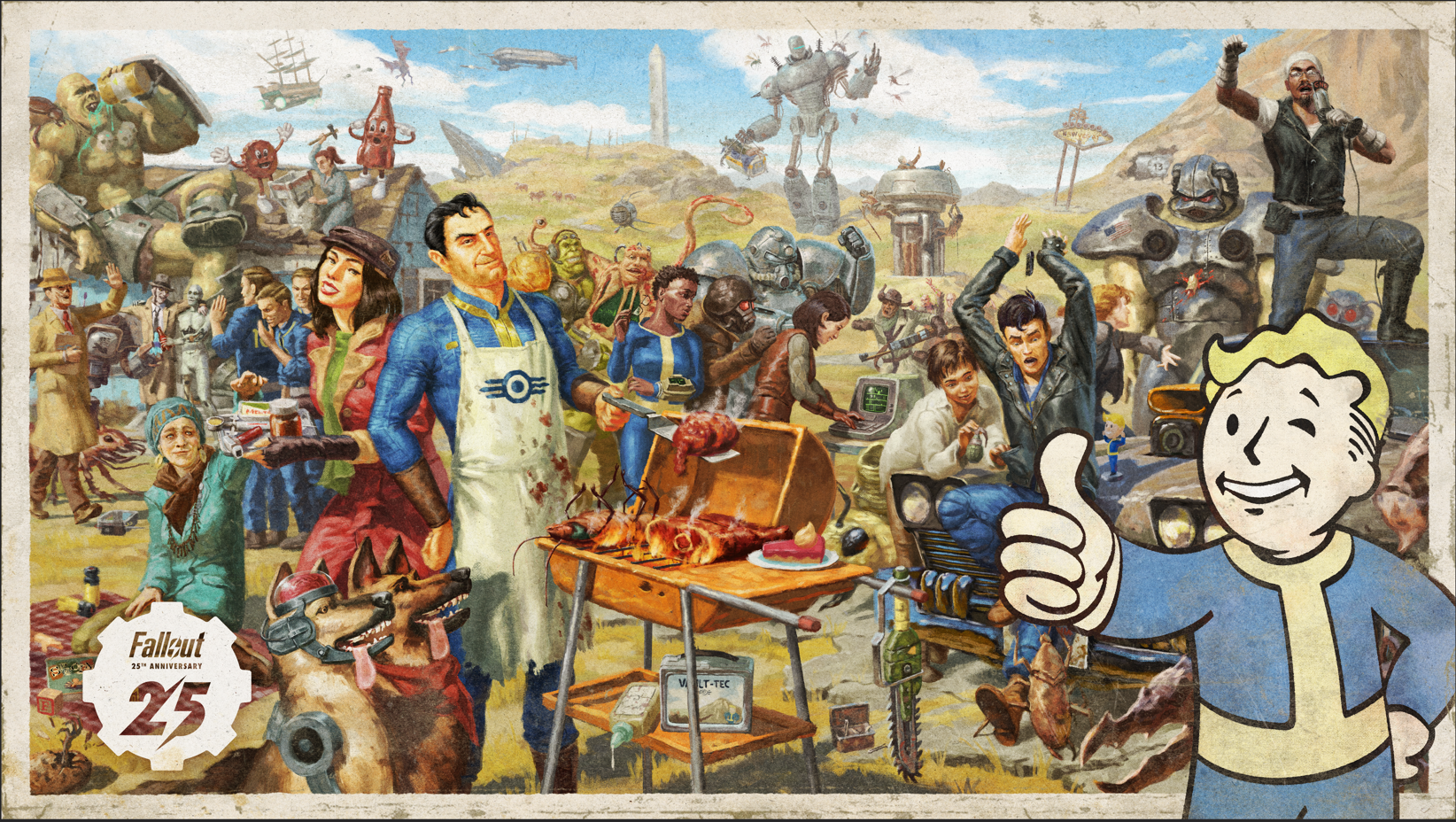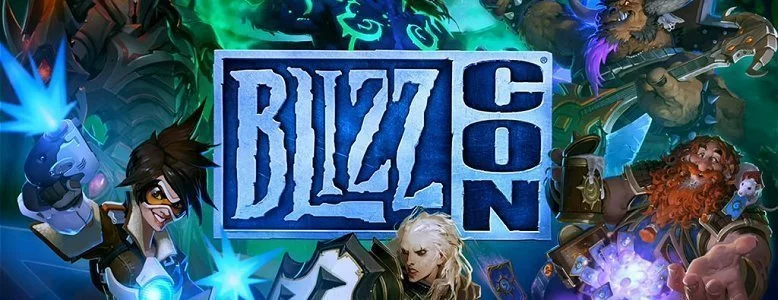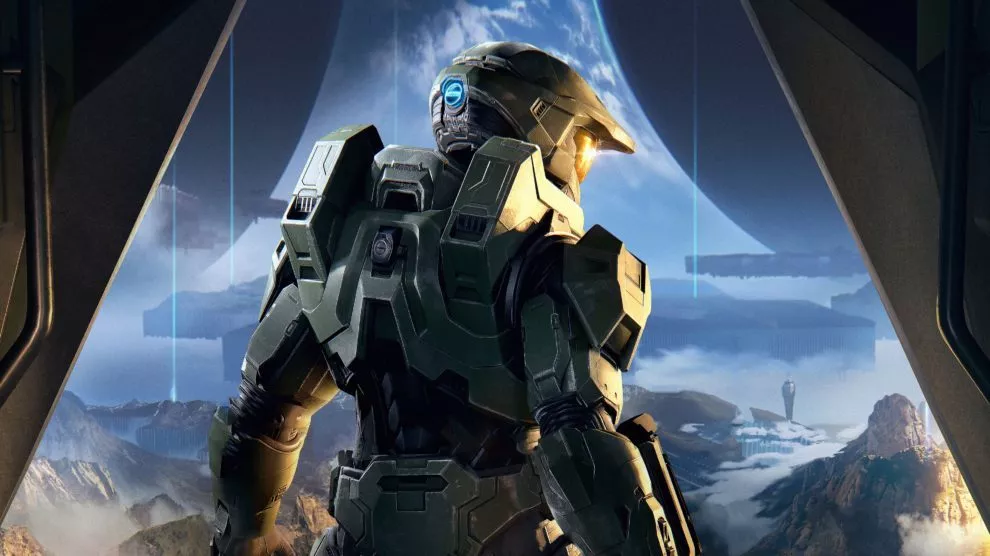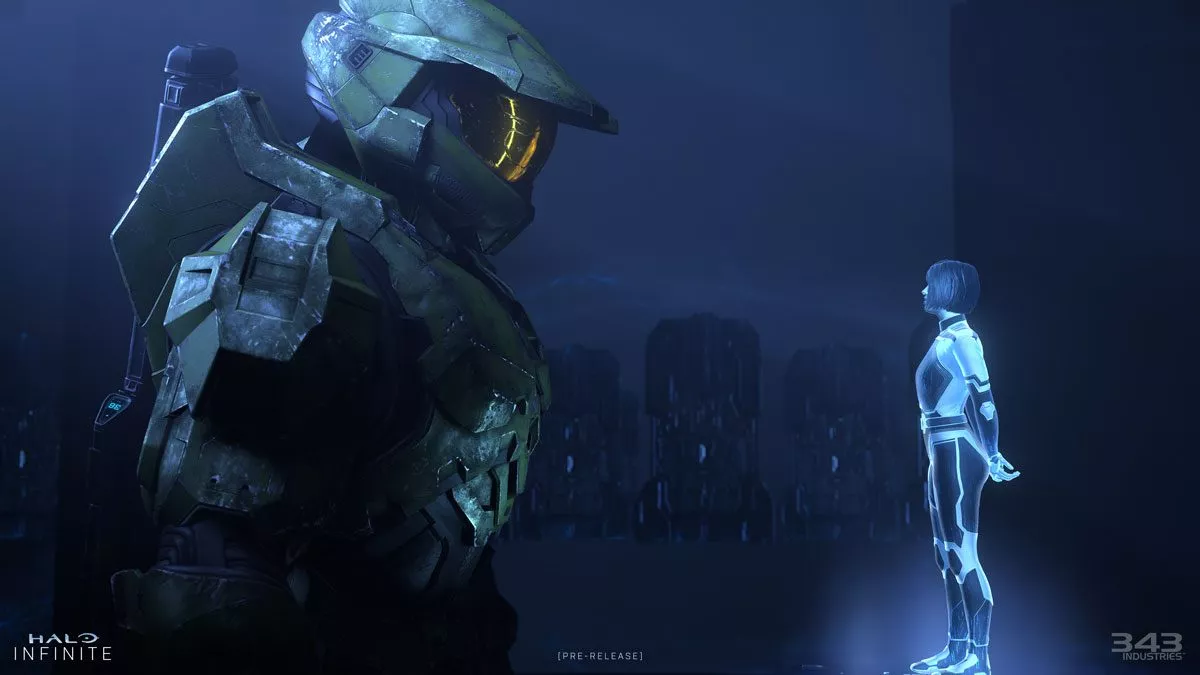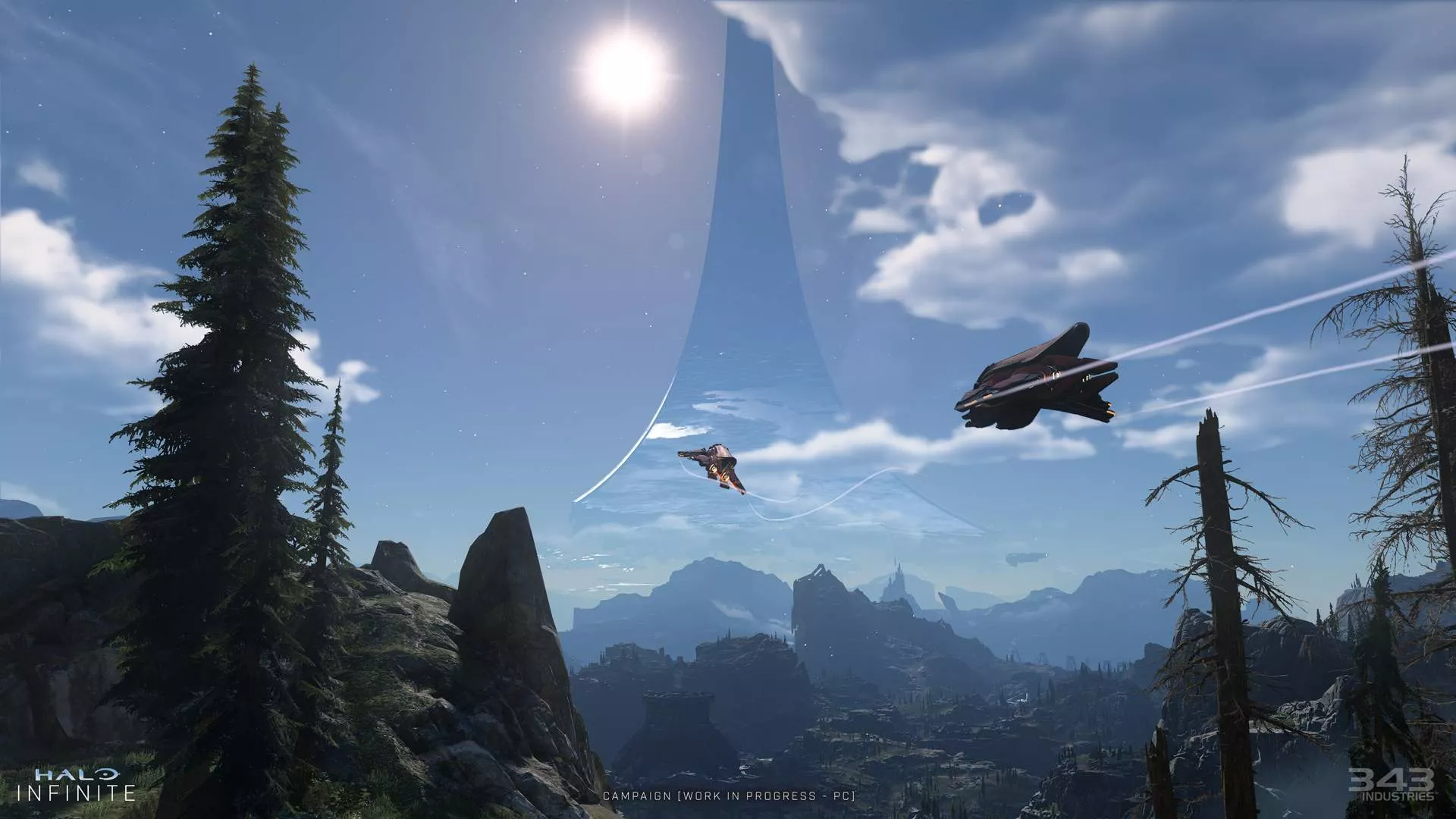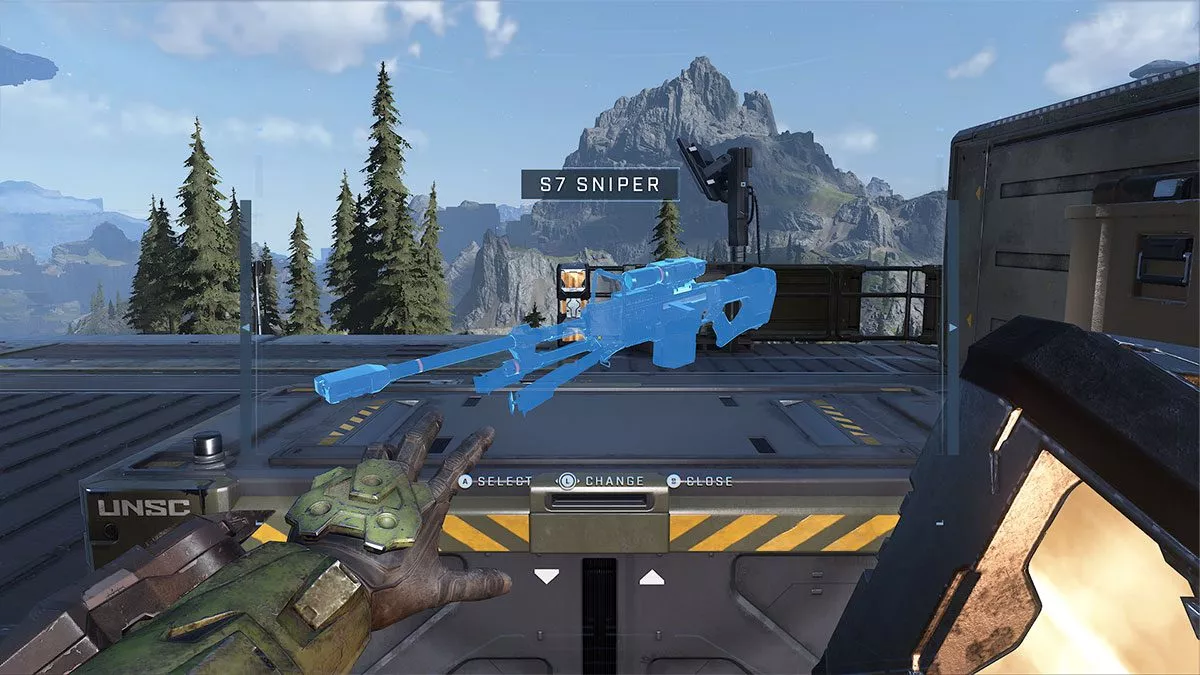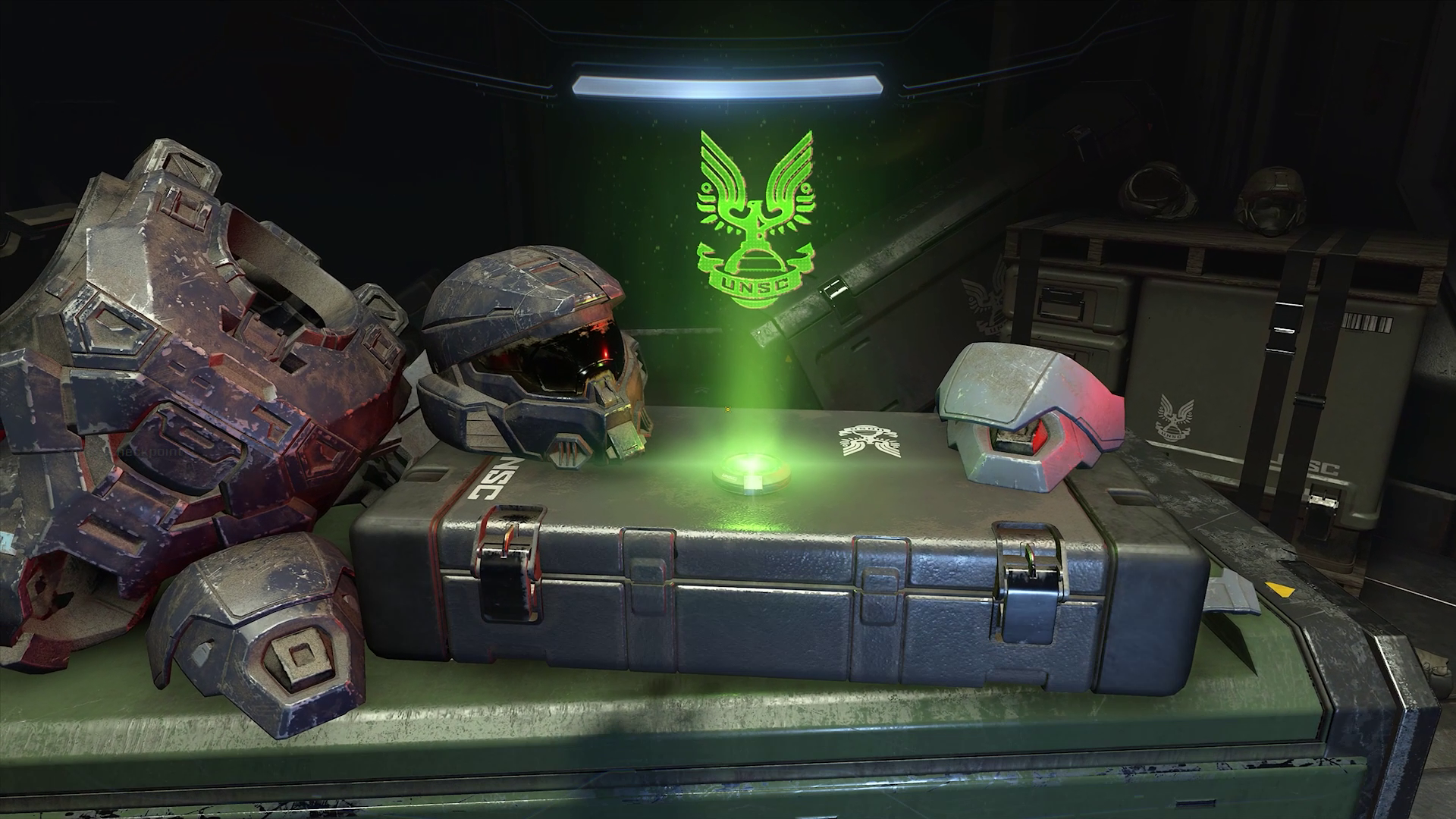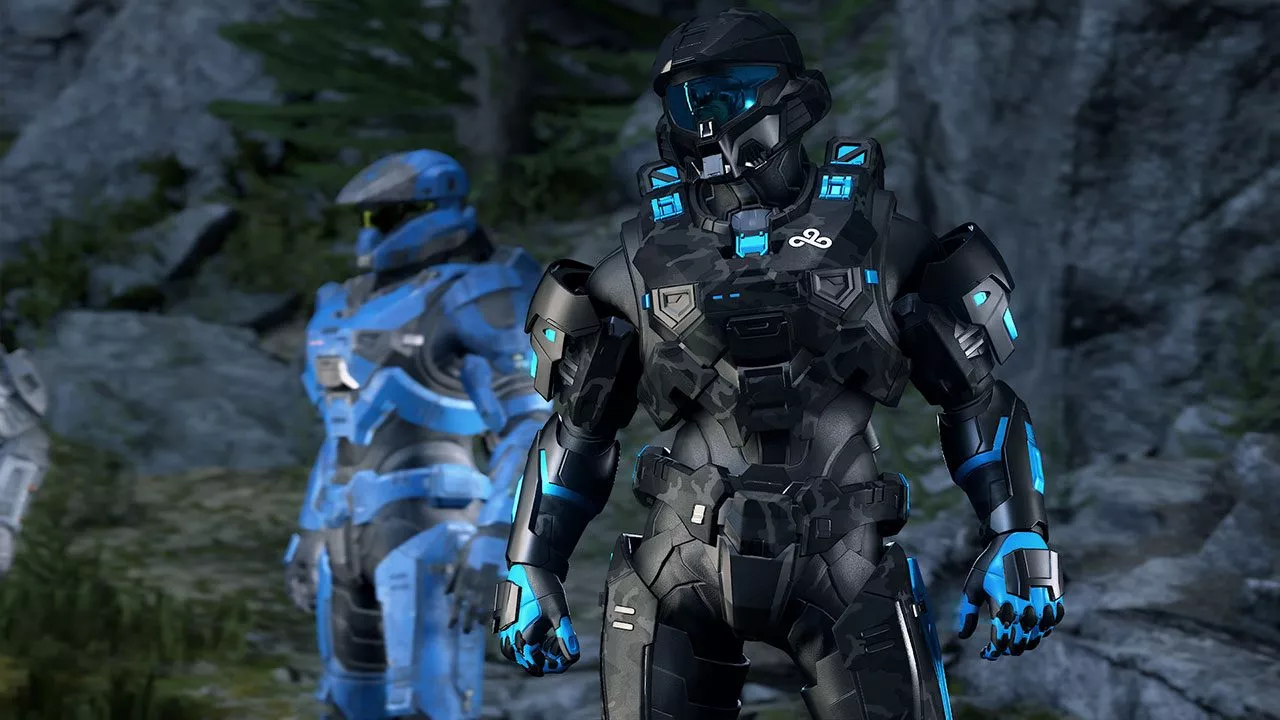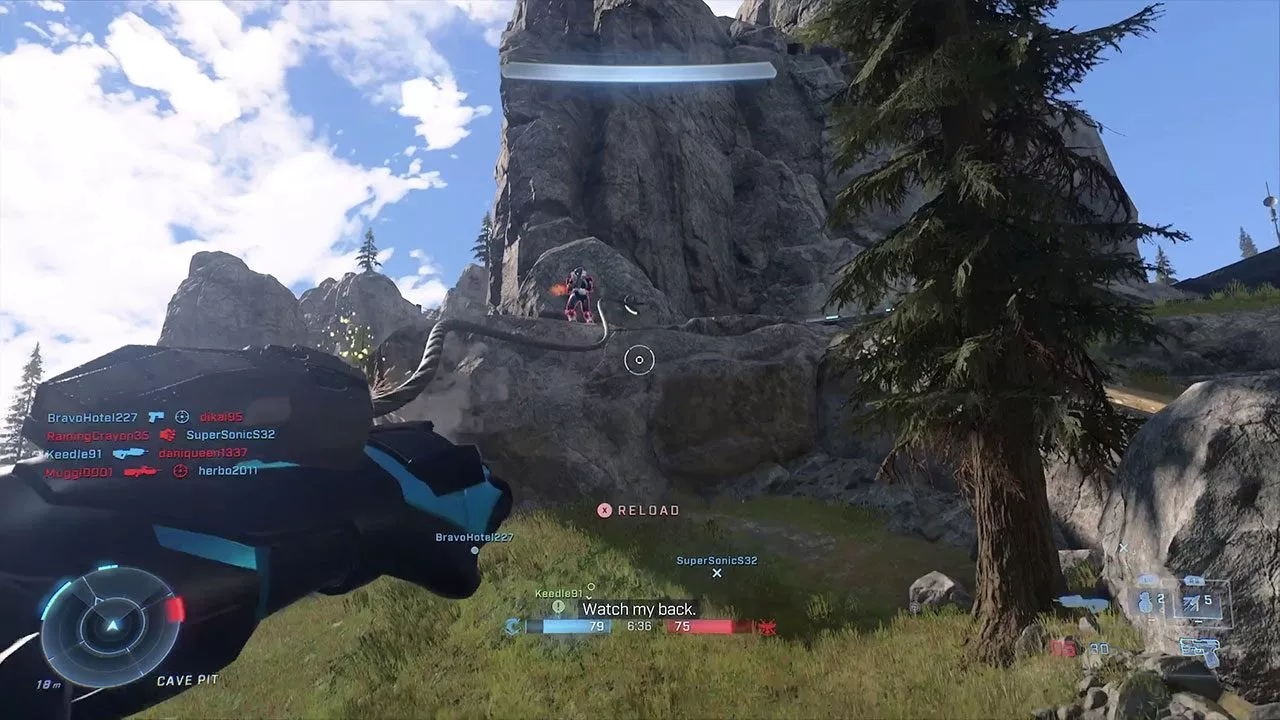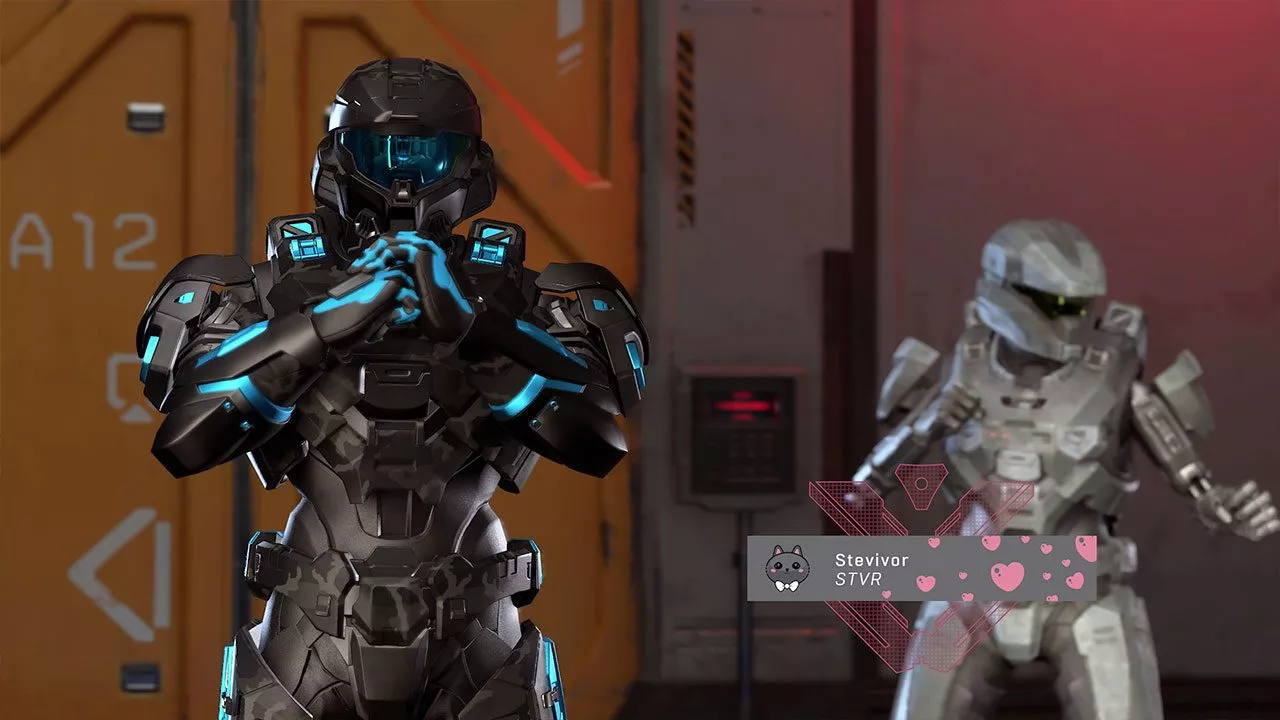You (and Microsoft and 343) are shooting for the moon!
It’s official: after a year-long delay, Halo Infinite is finally starting to roll out to users. Multiplayer has been live platforms for a number of weeks and single-player is right on our doorstep, available from 5.00 am AEDT on 9 December here in Australia.
We’ve had hours and hours with Infinite‘s modes and we’re ready to tell you how they play.
Single-player campaign
A franchise as old as the Xbox itself, Bungie created an instant classic with Halo: Combat Evolved. It followed suit with several spectacular sequels — Halo 2, Halo 3, Halo 3 ODST and Halo Reach — before bowing out and moving over to the fabled Destiny franchise. With the IP firmly in Microsoft’s hands, a new studio called 343 Industries was born and charged with continuing the Master Chief’s legacy.
It was hit and miss.
I enjoyed Halo 4 — the start of 343’s Reclaimer narrative — far more than Halo 5 Guardians, though our review scores mightn’t properly reflect that. Halo 4 very much felt and played like a classic Halo game, though introduced an entirely new enemy faction in the form of the Prometheans. The new faction also allowed for new hardlight weaponry and skills that the Chief had never used before; 343’s sequel also introduced us to the likes of Spartan Sarah Palmer and the UNSC Infinity, opening the world of Halo up like never before. All up, it was a sign that 343 could be trusted to carry the fabled franchise forward.
This was followed up by Halo 5, which did every little thing wrong with the giant exception of multiplayer. The Chief took a backseat, playing second fiddle to a new Spartan named Locke and a conflict that you knew was going to wrap up far before the game itself did. Co-op was key; Spartans no longer were killed on the field but first downed, meaning you’d have to go and revive a mate (or go and help an AI teammate… or vice-versa) out instead. Gameplay felt better suited for a Call of Duty title than Halo, and the only real saving grace of campaign was the story of the Chief, his Blue Team compatriots and the ongoing rampancy of his trusty (not so trusty) AI, Cortana.
In part, Halo Infinite ignores all of this, throwing the story forward in time and offering up what TV producers would term a ‘mystery box’ for us to solve. The Chief is called back into action on Zeta Halo after (again) being listed as missing in action. In that time, the fight was finished — and the UNSC lost. Chief is awakened not by Cortana — her whereabouts and fate are unknown — an instead by an unnamed pilot only referred to as Echo 216. The fight against the Prometheans or any remaining Flood no longer matters; instead, the Chief needs to save the UNSC soldiers who’ve been stranded on Zeta Halo with depleting reserves and little sense of hope.
Halo Infinite is a reboot in many ways but at the same times carries forward 343’s established storyline. It admittedly helps to know what’s happened in previous Halo games — including the Halo Wars franchise — but it’s not necessary. Chief is soon coupled with The Weapon, Cortana in appearance but not in attiude (nor in colour) and throws himself at wave after wave of Brutes, Grunts, Jackals and Elites, now branded as The Banished rather than the Covenant. If this seems like a complaint, it’s not. Halo Infinite is a shining example of what a Halo game is at its core while simultaneously feeling fresh, invigorated and very modern.
I’m attibuting most of that success to the Chief’s new grappleshot tool. As experienced in Infinite multiplayer, its just one device at the Chief’s disposal, and one that drastically changes gameplay. You can use it to zip around the map, disrupt Jackal shielding, nab weapons that are out of reach and just so much more. Playing on Heroic difficulty, I found it was a perfect way to fight aggressively and then zip away to relative safety when needed. My only real problem with the grappleshot is that it’s too good — I’ve rarely seen the need to swap out to a threat sensor and I continue to forget I don’t have access to it at all times in multiplayer. As such, I end up looking a right fool attempting to fly around when map when I’m firmly rooted to the ground.
Tools aside, all of Halo‘s iconic core remains intact. There are familiar weapons, vehicles and enemies (alongside the introduction of new weapons, of course, but they feel very familiar as anyone playing multiplayer already knows). These tools form the heart of the sandbox that is Infinite, essentially Halo 3 ODST on steroids. As the player, you have freedom to head straight to a main mission objective or instead divert to a Forward Operating Base (FOB), Banished Outpost, UNSC marine rescue, high value targets and more. My only complaint here is that Infinite needs more smooth jazz (though its actual, non-ODST inspired soundtrack hits all the right notes too).
The Zeta Halo is absolutely gorgeous and extremely varied, with insane terrain that just begs you to get creative with the grappleshot and, eventually, vehicles that you can spawn at FOBs. Your sense of exploration as the player (and perhaps duty as the Chief) is rewarded through new weaponry, tool upgrades in Spartan Points and the all too important currency of Valor, necessary to unlock more weaponry and vehicles like the Wasp, Gungoose or Scorpion tank.
This combination of old-school game from a new angle has proved incredibly enjoyable. Main missions feel like main missions, while side content is a lovely, Halo-feeling palate cleanser. The Chief’s not going on fetch quests or stopping to play checkers with some UNSC marines taking a break, he’s instead traversing the Zeta Halo, taking names and kicking ass. Sadly, those looking to replay missions to mop up Skull or Audio Log collectible Achievements will find that they can’t… at least, not without starting a new save and playing through the game to get to whatever mission they desire. To be frank, that sucks and is decidedly not Halo; I hope a level select function — or at least the ability to create many manual saves — appears sooner than later.
The only other real problem I have with campaign is its need to have players collect every single Audio Log (not displayed on the map in open world) and Propaganda Towers for Achievements, the latter of which suffer from horrendous pop-in even on Xbox Series X. You practically need to be on top of the things to see them. On top of that, the Towers’ their audio triggers sometimes will not fire, meaning they’re easy to miss. I can only imagine the pop-in issue is far worse on Xbox One going off technical test play in the shooting range.
Character and Combat Director Steve Dyck told me that Infinite‘s philosophy was to say yes to the player, and sInfinite does just that. From the removal of fall damage to the introduction of throwable Power Cores, every action you make feels like a Spartan-fuelled power play. You are strong. You are fierce. You are the only one who can save the remnants of humanity on Zeta Halo, and that’s how the Master Chief should always feel.
Despite technically serving as the third part of 343’s Reclaimer trilogy, this is really a soft reboot of Halo as we know it. Canon is still canon and all is there, but we’ve got a pivot back to what made Bungie’s efforts so pleasing in the first place. If you’re following the story — and good luck with that, because it’s pretty complicated at this point — there are some huge ramifications for things to come. If you’re not, it’s just fun shooty-shooty times, and that’s also fine by me.
I love the Chief, I like nouvelle Cortana and I think the (randomly) unnamed Pilot has room to grow. In true mystery box style, we have a lot of answers and an almost equal amount of questions. Whether or not the latter is addressed within the next few months — or even years — within Infinite or a poorly-named sequel is yet to be seen.
Academy
Surprisingly, Infinite‘s Academy section is robust, a primer for multiplayer but with applications we imagine will extend into the campaign as well. At the forefront of the Academy is a tutorial that introduces new players to Halo‘s mechanics by way of a hidden Spartan Academy (named the Avery J Johnson Academy of Military Science in a great throwback to Halo of old) that trains a new flock of elite soldiers while the Master Chief and his compatriots on the UNSC Infinity hunt down Cortana on the Zeta Halo.
Lead by Spartan Laurette Agryna, the tutorial begins with a cutscene that shows us just how the fourth-generation Spartan came to join the cause. In command of a ragtag bunch of new Spartan recruits, Agryna teaches you the basics and puts you through your paces. You’re first introduced to your new AI companion named BUTLR (though you can go and customise this later on — I recommend FRET, cause it’s awesome) before tasked to take down a movement course and a shooting range before heading into a bot match to chain your knowledge together. There are a number of Achievements tied to the exercises, so it’s well worth doing for that let alone the introduction to Agryna, who also serves double duty as the overseer of Infinite’s multiplayer.
The movement course in particular was one I rather enjoyed; I thought I smashed it running through it on my first go but soon realised (with thanks to an Achievement) that I was limiting myself and thinking almost in a 2D, run and gun manner. Rather than blindly running from waypoint to waypoint, Greased Lightning challenged me to think outside the box and use the skills my enhanced Spartan genetics (and suit) allowed for. Say what you will about Halo 4 and Halo 5 Guardians (I personally like the former far more than the latter), but 343 Industries has always nailed the sense of power behind a Spartan and I believe Infinite to be no different.
The tutorial is a good starting point, but you can later head into weapon drills and a training mode to really get a feel of how Infinite works. Weapon drills are useful to learn just how wasteful you can be with a poorly-timed reload, and the training mode is quite useful when it comes to learning maps and experiementing with new abilities without the stress of actually being in combat. It differs from similar bot modes within muliplayer proper in that you can set the number of friendly and enemy AI (meaning you can eliminate all but yourself) and change new equipment on the fly to see how it works on a specific map.
We highly recommend jumping into a solo match and equipping the grappleshot to really understand how traversal has changed (or rather, has the potential to change) inside Infinite‘s modes. Not only does Infinite feel far faster than Halo titles before it, but it’s way more vertical (or at least way more vertical without the need to find a Banshee or be a pro at rocket jumps).
Multiplayer
With the campaign locked firmly away until December, the meat and potatoes of Infinite lies in its multiplayer for the time being… and perhaps after that as well. While the campaign will set (non-Xbox Game Pass subscribers) back an additional fee come next month, multiplayer is free-to-play. Those looking to kit out their Spartan — like I’ve done above thanks to a spiffy new HCS Cloud9 colour scheme that I’m just pretending is a Stevivor one — can do so with one-off microtransactions or a purchaseable Premium Battle Pass that unlocks new items as you progress. The Battle Pass thankfully never expires, meaning a player can purchase the functionality and pick away at it at their own progress. Those who rush through it may find themselves a little bored in Infinite‘s first season however; it’s technically started earlier than planned and runs long into May 2022.
Coincidentally, if you’re struggling to figure out how to download the free Halo Infinite multiplayer component without buying the campaign, you’re not alone. We’ve got you covered here.
That all aside, multiplayer is crazy fun. It was great back in the Infinite multiplayer technical test and it remains so today. I’ve literally just spent the better part of 12 hours — basically, since its surprise announcement — playing, and I regret nothing (apart from forgetting to shower until very, very recently). It’s fast-paced but not as ridiculous as Call of Duty Vanguard‘s insanely fast time-to-kill (TTK), with a range of weapons that actually feel different from one another. The Sidekick handgun is ever-reliable as ever, and I find myself gravitating to the VK78 Commando or battle rifle on mid-range and smaller maps alongside a trusty CQS48 Bulldog on smaller ones. The Commando’s great a long-range when you zoom in with LT, but otherwise I’ll treat it like a Halo of old and just hip fire when a baddie is nearby. Big Team Battle means you’ll need to change up your tactics, with weapons like the Skewer, the Ravager and a trusty sniper rifle going a long way.
Maps feel relatively fresh — though somehow a tad samey at the same time — but all have their strengths and weaknesses. Recharge as an example is great for Slayer (kill the blues… though they’re not the blues anymore) and Strongholds (secure the points!) while it can be a bit of a mess in Oddball if the one team can get into the vents; it’s a relatively easy area to protect. Streets seems to be the Stronghold map of choice, with three positions that are easy to just continually rotate around, though a rocket launcher spawn in the middle will certainly draw your attention away from the capping dance. I kept finding myself playing Capture the Flag on Bazaar, which works well with a variety of long sightlines and vertical vantage points.
Big Team Battle (BTB) is hectic, but in the right ways. We’ve only had one Stockpile match thusfar, but BTB is great because you can really play to your strengths and support a team without it being a 4v4 affair. If you’re good at sniping, sit back on the point and pick away. If you’re a vehicle guy, jump in a warthog and slam on that horn until someone jumps on the gun. Matches today seem pretty balanced; all have been close calls and nothing feels like a waste of time. Again, it’s easier to digest than Vanguard and without the five minutes of running to a point only to be sniped like in Battlefield 2042. There’s a learning curve in finding weapon and vehicle spawns, alongside one where you need to realise what weapons and equipment will be effective where, but that’s half the fun.
Read more: Halo Infinite multiplayer progression falls well short of the hype
Really, the only thing I don’t enjoy about Infinite‘s multiplayer at this point is its Battle Pass system. Sure, the mode’s free and the pass never expires, but I’ve been playing all day and I’ve only reached level 3. That’s because 1) I didn’t spend extra money to jump up 25 levels and 2) I’m having fun playing how I play; the problem with the Battle Pass is that you only progress through completion of challenges which you cannot swap out unless you’re of a higher pass ranking or pay to do so. Otherwise, you’ll have a challenge that tasks you to go and commandeer that one Banshee that spawns in a BTB match and kill five baddies as if you’re John McClane… or John-117. I’d much rather my Boxer, Killing Spree and Perfect medals — or simply just the score that I’m racking up in each game — feed into my progress rather than a random, proprietary system that seems designed to make you play in a different way than you’d like or simply just exists to impede your natural progress.
While 343 is addressing Battle Pass progression, there’s still a lot of work to be done. Rewards aren’t that fulfilling, and the nature of the current challenge system means that anyone in quickplay modes will simply cancel out of games when they know what they’re about to play. Have challenges revolving around Capture the Flag? Well, Slayer and Oddball are useless. Need Slayer but got Oddball? Well, cancel out too! A lack of quitting penalties and two weeks of experience mean players will simply drop out of matches because they can, leaving teammates to the mercy of rather useless bots. Boo.
I was tempted to award Infinite a perfect score, but holes in functionality in both campaign and multiplayer hold it back ever so slightly. Don’t get me wrong, though — this is a fantastic offering and you absolutely owe it to yourself to play it. I imagine by May 2022 or so, that 10/10 experience will be there for fans and casual players alike.
Update: It’s strange to see games that become worse after launch, but this is undeniably true for Halo Infinite. Because I trusted that couch co-op, a staple of the Halo experience, would be added in a post-launch patch, I gave the title the benefit of the doubt. I also expected multiplayer seasons to be plentiful, regular and full of engaging cosmetics, maps and modes. None of these things has happened.
Halo Infinite is 343 and Microsoft dropping the ball, and unacceptably so. We’re forced to rescore accordingly — dropping from a 9.5 to a 7 — though if you’re a single-player only type of player there is a lot of fun to be had within this title.
Halo Infinite — in all its forms — is live on Windows PC, Xbox One, Xbox Series S and Xbox Series X.
Halo Infinite was reviewed using promotional codes on Xbox Series X and Windows PC, as provided by the publisher. Click here to learn more about Stevivor’s scoring scale. We have informed both Metacritic and OpenCritic of our September 2022 score change.
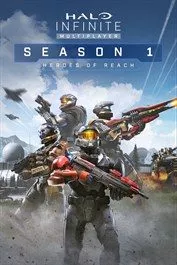 |
Halo Infinite16 November & 9 December 2021PC Xbox One Xbox Series S & X |
This article may contain affiliate links, meaning we could earn a small commission if you click-through and make a purchase. Stevivor is an independent outlet and our journalism is in no way influenced by any advertiser or commercial initiative.


